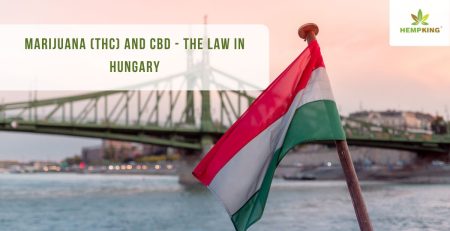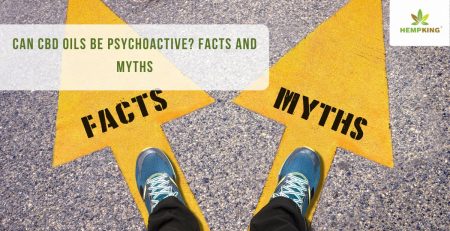Color of a CBD oil
min. reading
More and more CBD oils are appearing on the CBD market with varying colors. Consumers often ask themselves: what is the correct color of CBD oil? It turns out that depending on the type of extract, the type of extraction or the base substance used, CBD oils can have different colors. From translucent to golden, amber to intense green, the colors of CBD oils can vary greatly. There are many factors and parameters that affect the color of the oil. So is it possible to determine the quality of CBD oil by its color? See the rest of the article for more information.
Table of Contents
What does the color of CBD oil depend on?
There are many different ways to produce hemp extracts, which makes the CBD oils available on the market increasingly diverse. Not only can you find extracts with different percentages, for example, 5, 10, 30% CBD, or based on different carrier oils, such as hemp seed oil or MCT oil, in the stores. In addition to this, different types of extraction are used to produce oils, for example, alcohol, CO2 or Freon extraction. There are more factors that affect color. It can be the use of an oil purification process, the addition of essential oils, juices or plant extracts. The type of extract also affects the color of the oil. This, among other things, means that products from different companies, despite similar concentration and extraction methods, can have a different color.
What exactly affects the color of CBD oil?
Already at the extraction stage, there are several parameters that will determine the color. One of them is the type of dried oil used. For oil production, you can use raw or decarboxylated dried – heat-treated to activate specific components contained in the inflorescences. Then the oil based on raw dried will have a greener hue. The extraction itself also strongly determines the color of the oil. This is because different solvents, depending on the method used, such as ethanol, CO2, or Freon, will extract different components from the plant. Then the oil purification step is carried out, which can look different depending on the manufacturer. The final component is the selection of the carrier oil, or base substance, in which the CBD extract will be dissolved. The visual difference between hemp seed oil and MCT oil is perfectly visible, so this element will also affect the final color of the oil. Another process that affects color is remediation (CRC), a technique used to purify hemp extracts from various contaminants. CRC uses various filter materials like silica, diatomaceous earth or activated carbon to remove unwanted components from hemp extracts. Purification can involve several steps, its goal being to remove most compounds besides cannabinoids (sugars, lipids, chlorophyll, terpenes) and impurities like pesticides. It is therefore a procedure that strongly interferes with the composition of the oil and changes its color.
What color should CBD hemp oil be?
To begin with, it’s worth clarifying that there is one right color that corresponds to good quality CBD. Depending on different extraction methods, percentages and other parameters, CBD oils can range in color from straw-colored, translucent, through golden, yellow-brown, brown, brownish-green to dark green, sometimes black. So is it possible to recognize a good hemp extract by its color? We can distinguish at least a dozen types of CBD extracts, each of which will have a slightly different color due to the extraction method used, carrier oil and concentration. So it’s worth learning what the characteristic color ranges are for different types of CBD oils. For example, an oil from alcohol extraction will have an intense green color, because this type of solvent extracts waxes and chlorophyll from the plant in addition to cannabinoids and terpenes. CO2 extraction, on the other hand, will usually yield an oil with a golden or slightly greenish color, depending on which dried herb is used. When choosing a raw oil (from raw dried), its green color will be more intense than an oil based on decarboxylated dried. To get a better idea of what the color of the oils should be, it is useful to know more about the characteristics of the extract in question: full spectrum, broad spectrum, distillate and isolate.
What color should full spectrum CBD oil be?
Full spectrum extracts are characterized by being the least purified, so they contain the widest set of active substances available in oils. These include, in addition to cannabinoids, terpenes, flavonoids, phenols and phospholipids. Chlorophyll, the plant’s characteristic green pigment, which is not always a desirable component of the extract, is available in large amounts here. For this reason, full spectrum oils will often be thick and green. In the case of higher concentrations (pastes), the color can be dark green. As a rule, it is believed that full spectrum oils, mapping the natural components contained in hemp inflorescences, have a synergistic effect with respect to each other (a set of these substances acts more strongly and better than a single compound). In stores there are also full spectrum oils subjected to purification of chlorophyll and waxes, which have a golden color, for example, coming from CO2 extraction.
What color should broad spectrum CBD oil be?
There is a slight difference between full spectrum and broad spectrum oils, namely there is no THC in the latter. Broad spectrum extracts are characterized by the fact that all of the tetrahydrocannabinol known for its psychoactive effects has been degraded to CBN or otherwise removed. In addition, “broad” oil contains virtually the same compounds as “full”. Its color, however, will be different. Due to the process of THC degradation and purification from waxes and chlorophyll, the color of broad spectrum oil will be amber, yellow-brown or brown. Because of this color, it can be mistaken for distillate – the difference in consistency will be visible to the naked eye. Broad spectrum has the consistency of oil, which can be administered in drops. Distillate, on the other hand, is very thick.
What color should hemp oil with CBD on an isolate basis be?
This is the poorest form of hemp extract. An isolate is an isolated form of one selected substance, usually one of the cannabinoids, such as cannabidiol, that has been added to a base substance. An isolate is in the form of a white powder, and when combined with a carrier oil, yields an oil that is pale yellow or transparent in color. Like full-spectrum and broad-spectrum oils, isolate is also combined with MCT oil for its greater bioavailability. It is worth bearing in mind that this type of extract has the risk of adding a synthetic isolate, that is, one created under laboratory conditions. The safest isolates are those extracted from hemp inflorescences.
CBD distillate – what color is it?
There is a sizable group of distillates, and they vary depending on the extraction method, but what they have in common is a thick consistency and a golden-brown color. Distillate is a form of CBD concentrate that has been concentrated, but still contains small amounts of other cannabinoids and terpenes. This type of extract is richer than isolate but poorer than broad spectrum. The concentration of CBD in the distillate can reach up to 90%. They take on the consistency of a thick syrup or a malleable paste. This is the most common type of extract used in vape pens for CBD vaporization.
Summary – color of CBD oil
Today’s CBD oil market is surprisingly diverse. In addition to the different percentage concentrations of cannabidiol in the oils, they also differ in the type of extraction, the degree of purification, the type of carrier oil. They are also often enriched with fragrance oils, herbal and plant extracts. All this affects the final color of the product. Determining the quality of a CBD oil based on its color is therefore extremely difficult for the average consumer. However, there are typical sets of colors characteristic of different extracts. Depending on whether you are dealing with full spectrum oil, broad spectrum, distillate or isolate – the color of the oil will vary significantly. Full spectrum oils, due to the broadest set of substances and chlorophyll content, will be green or dark green – especially from alcoholic extraction. With CO2 extraction, they can range in color from light green to gold. Borad spectrum products have a similar composition to full spectrum, but are devoid of one of the cannabinoids – THC. Due to the process of THC reduction in the oil, it is most often amber or yellow-brown in color and has a liquid consistency. Distillates, although similar in color, are poorer than broad spectrum – this type of extract is a form of CBD concentrate with a small amount of other cannabinoids and terpenes. It also has a different consistency, coming in the form of a thick syrup. The poorest form of oil will be the one based on an isolate. Because of the isolated form of CBD, this oil is either transparent or has a light, straw color.
















 Facebook
Facebook Instagram
Instagram

Leave a Reply